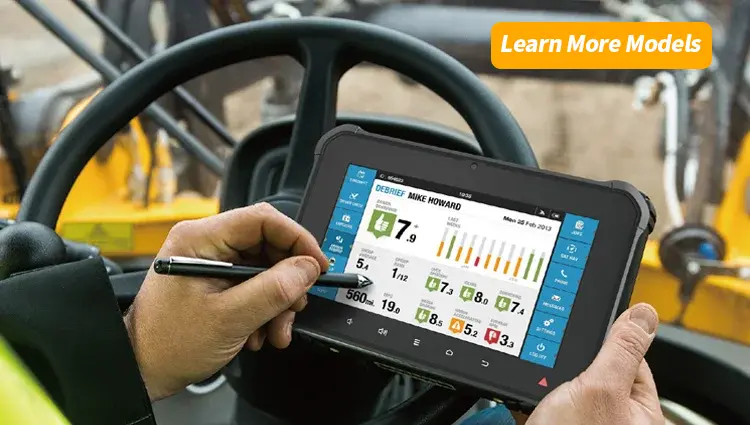Revolutionizing Fleet Management: Embracing AI and Computer Vision for Enhanced Efficiency and Safety
The transportation industry is at the cusp of a technological revolution, with Artificial Intelligence (AI) and computer vision at the forefront. Fleet management systems integrated with these advanced technologies are transforming how vehicles are monitored, maintained, and optimized for performance. This article explores the cutting-edge integration of AI and computer vision in fleet management computers and their impact on enhancing efficiency and safety.
- The Role of AI in Fleet Management :
- AI’s ability to analyze vast amounts of data from GPS coordinates to sensor readings allows for real-time decision-making that streamlines processes and minimizes costs.
- Advanced AI algorithms can forecast maintenance requirements, enabling preemptive scheduling of repairs and reducing downtime.
- AI’s ability to analyze vast amounts of data from GPS coordinates to sensor readings allows for real-time decision-making that streamlines processes and minimizes costs.
- Integration of Computer Vision:
- Lane departure warning and blind spot detection systems utilize sensors, cameras, and image processing algorithms to enhance road safety.
- Video telematics monitor road conditions and driver alertness, aiding in risk reduction and safety protocols.
- Lane departure warning and blind spot detection systems utilize sensors, cameras, and image processing algorithms to enhance road safety.
- Optimizing Routes with AI:
- AI-driven systems consider traffic and weather conditions to calculate efficient vehicle routes, ensuring quicker deliveries and reduced fuel consumption.
- AI-driven systems consider traffic and weather conditions to calculate efficient vehicle routes, ensuring quicker deliveries and reduced fuel consumption.
- Predictive Maintenance and Cost Savings:
- AI algorithms analyze data to predict vehicle issues, allowing for proactive maintenance and cost savings on repair expenses.
- AI algorithms analyze data to predict vehicle issues, allowing for proactive maintenance and cost savings on repair expenses.
- Enhancing Safety with Real-Time Monitoring:
- Real-time tracking and analysis of driver behavior help identify and rectify risky practices, promoting road safety and reducing accidents.
- Real-time tracking and analysis of driver behavior help identify and rectify risky practices, promoting road safety and reducing accidents.
- Environmental Impact and Sustainability:
- AI optimizes fuel consumption, leading to cost savings and a positive environmental impact by lowering greenhouse gas emissions.
- AI optimizes fuel consumption, leading to cost savings and a positive environmental impact by lowering greenhouse gas emissions.
- The Future of Fleet Management:
- The potential for AI to evolve further, driven by advancements in machine learning, presents an exciting future for fleet management, ensuring businesses stay ahead of the innovation curve.
- The potential for AI to evolve further, driven by advancements in machine learning, presents an exciting future for fleet management, ensuring businesses stay ahead of the innovation curve.
Conclusion
The integration of AI and computer vision in fleet management is not just a technological upgrade but a strategic move towards a smarter, safer, and more sustainable transportation system. As the industry continues to evolve, the adoption of these technologies will be crucial for businesses aiming to maintain a competitive edge.








